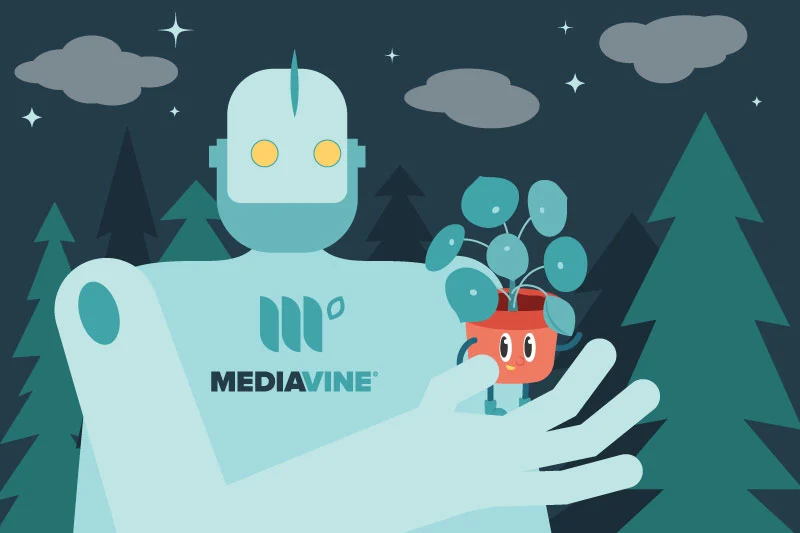Why We Require 100% Exclusivity with Our Publishers


In programmatic advertising, and probably in life, you don’t want a friends-with-benefits type situation.
Sure, it might seem intriguing on the surface, but if something sounds too good to be true, it probably is.
We can’t give you relationship advice, obviously, but from an advertising perspective? You want to be exclusive.

From the day we began offering ad management, Mediavine has required 100% exclusivity from our publishers.
Put another way, we require our publishers to give full control of their programmatic advertising to Mediavine.
While slightly less radical of an idea today than it was seven years ago, exclusivity remains a hot topic in our industry.
Below, we’ll examine why we made this choice, how it shaped the industry overall, and most importantly, why it actually makes publishers more money in the long run.
Before Mediavine became the first truly exclusive ad management company, the alternatives were seen as networks, or resellers of inventory.
We worked hard to change that reputation.
Soon, the industry started to look at companies like Mediavine in a different way — so much so that they invented new terms for companies like us.
We became known as a Sales House or a Publisher (representing hundreds, then thousands of independent publishers) with a capital P.
What difference does it make if people call you one of those things instead of an ad network?
Actually an enormous difference when it comes to how brands and demand partners view our inventory. We’re able to use direct lines in our ads.txt, form direct relationships with buyers (as opposed to through intermediaries), get featured in allowlists, and much more.
Put more simply: Because of how we present ourselves in ads.txt, we can work with larger buyers as a publisher and not as a reseller. Mediavine publishers are treated as premium publishers, and compensated accordingly.
Previously, this type of treatment was reserved for top ComScore 100 companies. (Think: Disney). Now, we – Mediavine, and Mediavine publishers – are among the top 20 Internet Giants according to ComScore.
That came from exclusivity.
There’s a reason why, from a demand side perspective, resellers and ad networks historically have a worse reputation than publishers. A direct relationship with publishers is invaluable.

When you allow third parties to resell your inventory, you’re effectively giving up control.
Content recommendation companies, commenting systems, and other “incremental revenue” opportunities will come your way as a publisher.
You think, hey, it’s more money on top of my Mediavine income, right?
If only it were that simple. That sales pitch doesn’t take into account the cost of selling that inventory.
Mediavine works incredibly hard to protect the value of your inventory. Our placements and auction dynamics not only make sure you get paid the most per impression, but ensure we deliver optimal value to advertisers in return.
The reason that the world’s top advertisers continue spending on Mediavine sites is that it works. It maximizes value. Once you start allowing third parties to start selling that same inventory, you’ll quickly devalue it.
Jounce Media, a supply path consultant, coined the phrase “cheap reach” to describe these exact type of arrangements in their Supply Path Optimization guide.
According to Jounce, “Cheap Reach inventory is chronically non-viewable, requiring out of the ordinary user behavior to be seen. These placements most commonly coexist with other high quality placements on premium publisher pages, making them hard to avoid.”
Translation: Cheap reach, or cheap media, shows up in places where the users are unlikely to actually see or interact with it. Such ads rely on the high performance of other advertising on a publisher’s website in order to dupe advertisers.
Put even more simply, these companies charge less than Mediavine would on your site.
However, when a buyer purchases inventory via cheap reach and through Mediavine, domain level reporting on their end can’t differentiate between them.
This means that in the short term, the quality of your Mediavine inventory brings up the performance of cheap reach.
Emphasis on the short term. It won’t last. In fact, it will end up causing more harm than good before long.
You may not see a drop in your viewability in your Mediavine dashboard. If you’re running ads with cheap reach in a third-party environment, the impact won’t be measurable as far as Mediavine ads are concerned.
So the question becomes: If you still have 70%+ viewability and advertisers love your inventory, what’s the problem with doing this?
Consider the advertisers’ perspective. They are still buying more impressions thinking they’re getting that 70%+ viewability and great performance.
Their algorithms start heading towards cheap media because that’s the cheapest source for what they think is the same, high-value inventory.
This isn’t theoretical; it impacts flooring (the minimum amount advertisers will pay for your inventory) in a tangible way.
If a cheaper avenue for advertising on your site becomes available, advertisers will gravitate towards that. Which means they will soon stop paying for premium Mediavine inventory and begin buying whatever cheap media is lowering the floor.
As the months go by, advertisers realize that their viewability is dropping, and that other measurement methods, e.g. number of sales, are falling as well.
Best case scenario: CPMs/RPMs decline as buyers find, and start paying less for, your inventory.
Worst (and more likely) case: They drop the domain altogether and those CPMs/RPMs plummet.

Even if you’re not running what you think of as third-party ads, you may be doing so via third-party tools such as commenting systems and recommended content.
It’s important to evaluate the terms of service and see what you’re giving up.
The simplest way to monitor this and put a stop to it? Make sure you are not modifying your ads.txt. Mediavine should be serving and controlling your ads.txt. If someone is asking for access to add a line there?
Say hello — and then say goodbye — to your Cheap Media.
Keep your inventory valuable. Stay exclusive.
Stay up to date with the latest from Mediavine
Welcome to the much-anticipated release of the fifth-annual edition of “The Best eCPM Days of the Year” calendar. Each year, we analyze historical trends to provide publishers with a graphical …
“Let’s talk about politics.” We know. This is a phrase absolutely no one wants to hear uttered around the dinner table or backyard barbecue these days. But hear us out. …
Ah, July. It’s a glorious month of sand-filled swimsuits, mosquito invasions, broken air conditioners and applying sunscreen only to look like cooked lobsters. It’s also the start of a new …